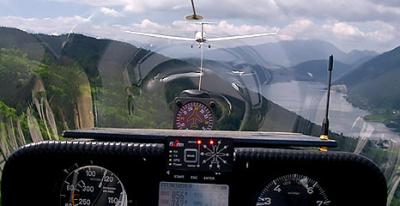- Support portal
- Evaluation Kits and partner products
u-blox Support
- Product documentation
Documentation
- Investor relations
Investor relations
Case studies
FLARM airborne collision avoidance, with low caps
Making a difference: high performance and reliability, an attractive form factor, and fast integration.

FLARM is an affordable traffic awareness and collision avoidance technology. Over 30,000 units are in use in all types of aircraft globally. It has contributed to an increase of situational awareness and overall aviation safety. FLARM was instrumental in reducing the number of mid-air collisions and near-miss incidents since its introduction in 2004 by the Swiss company of the same name.
Challenge
FLARM chose to work with u-blox GNSS products because of the combination of performance and reliability, as well as an attractive form factor and fast integration. Partnering with u-blox allows FLARM to benefit from the strong innovation pipeline, while the robust configuration, filter and messaging framework keep the efforts manageable.
u-blox solutions
Each FLARM device determines position and dynamics using a u-blox GPS/GNSS receiver. It then calculates a precise projected flight path. This is broadcasted by radio to all nearby aircraft allowing traffic to be displayed to the pilot. Using a combination of its own and received flight paths, smart motion prediction algorithms assess the collision risk based on an integrated risk model. Pilots are given visual and audible warnings about dangerous traffic based on the level of danger.
“Working with u-blox products allowed us to focus on our core competence, which is to develop and improve traffic awareness and collision avoidance systems for manned and unmanned aircrafts. It also enabled us to be on the market faster,” says Andrea Schlapbach, Co-Founder of FLARM Technology Ltd.
FLARM today is the dominant cooperative sense and avoid system for General Aviation in Europe, namely in the lower airspace. A large variety of own and licensed third party products is available for drones, helicopters, manned aircraft, hang-gliders and skydivers. Some product lines integrate with 1090 MHz transponder and ADS-B technology, but all include fixed obstacle warnings and flight recording. A community-based network of over 530 ground receiver stations allows real-time tracking of all FLARM equipped aircraft across Europe.
Key benefits
- Dynamic filtering in airborne applications
- Stable communication interfaces